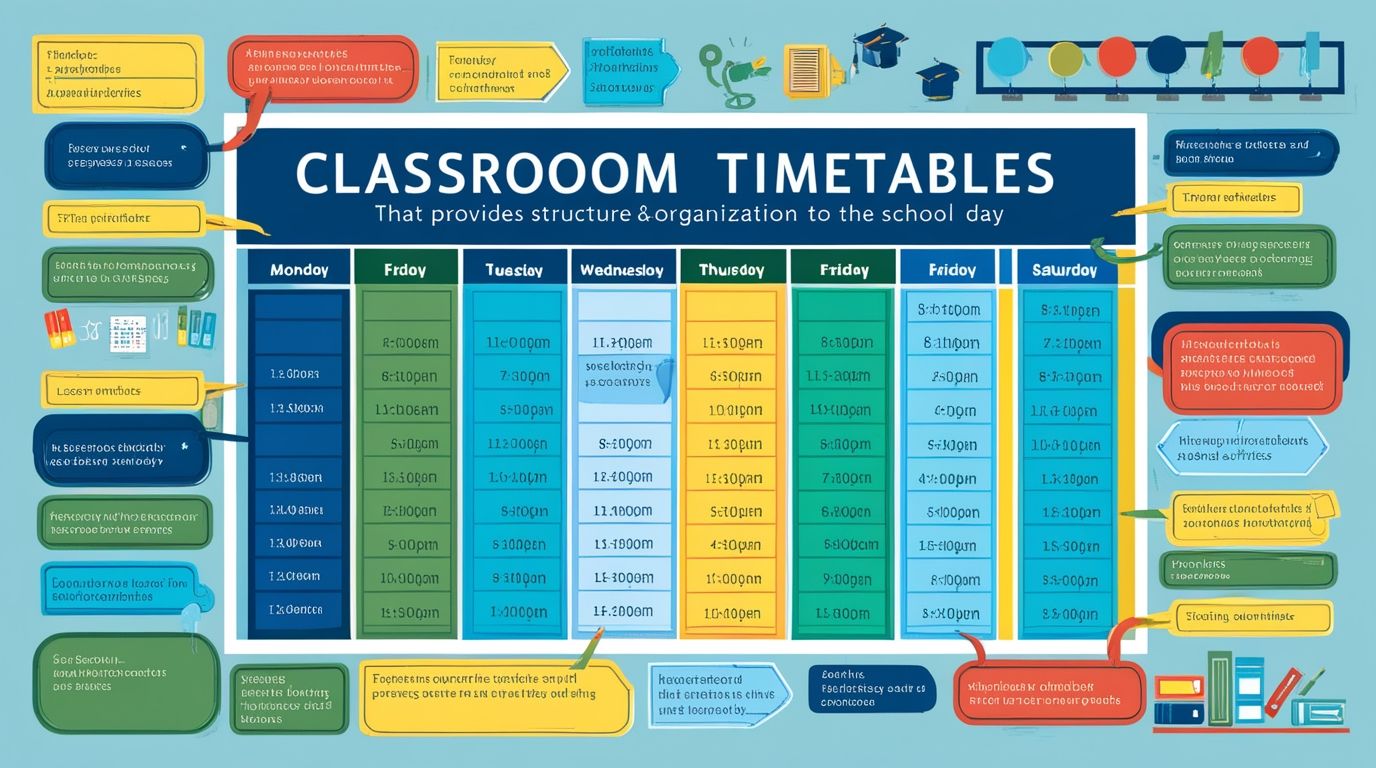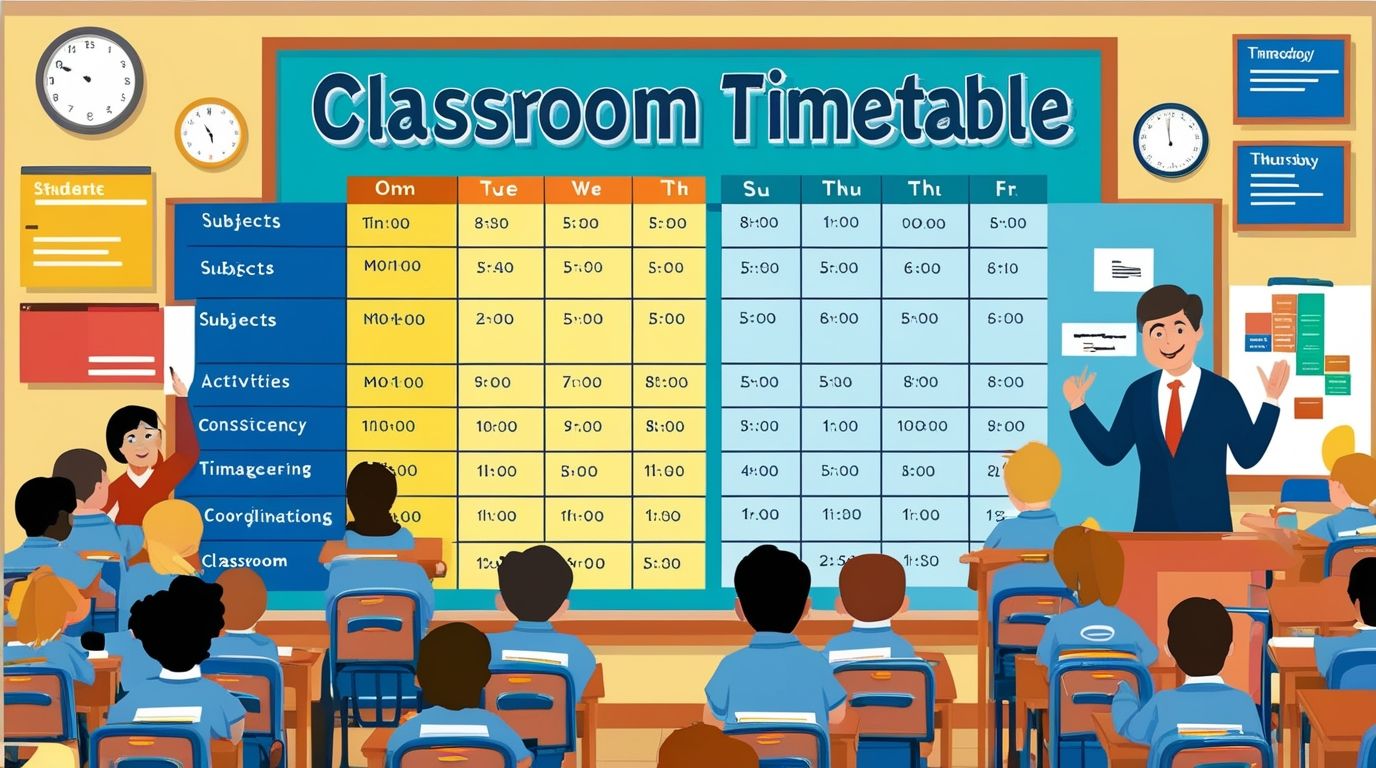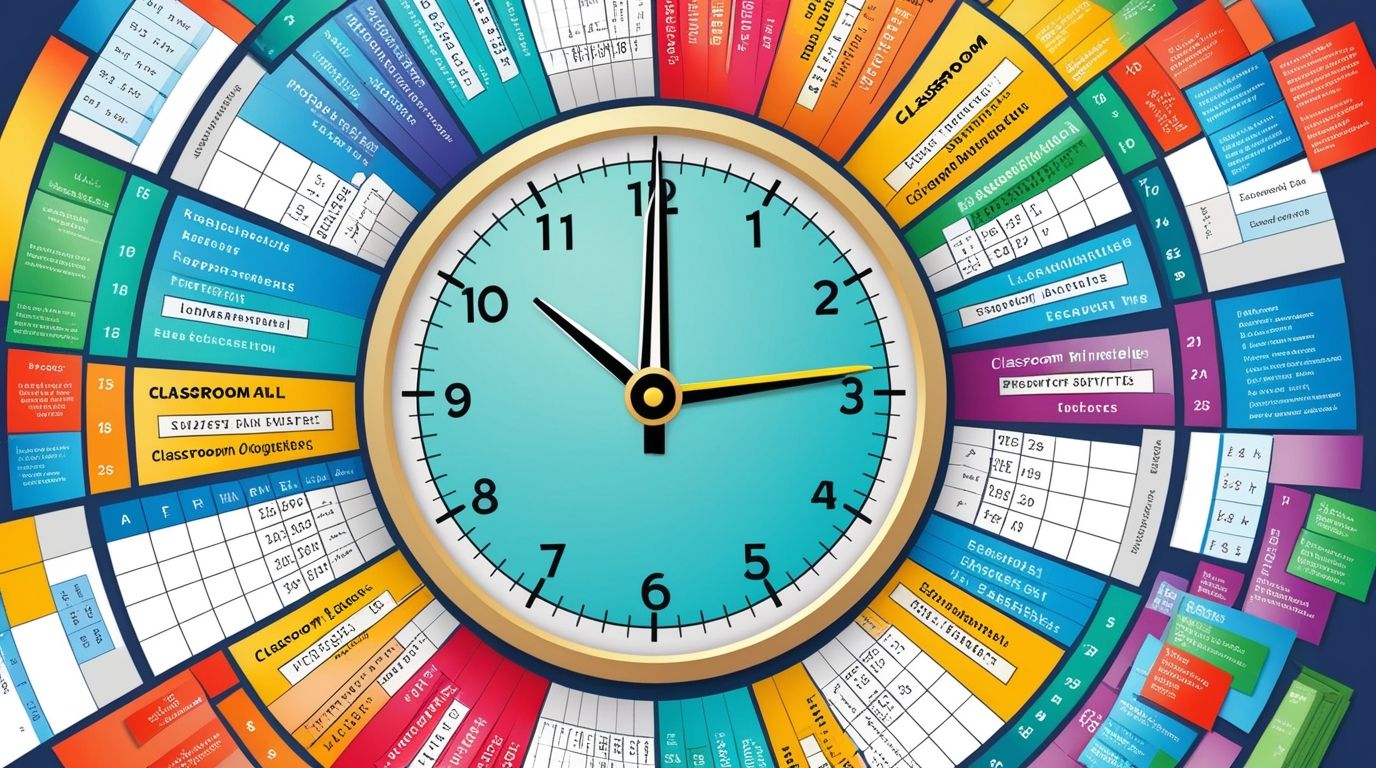The Importance and Role of Classroom Timetables, A classroom timetable is a structured schedule that outlines the allocation of time to various subjects, activities, and tasks within an educational environment. It serves as a roadmap for both teachers and students, guiding them through the school day with a clear structure and purpose. The role and importance of a classroom timetable cannot be overstated, as it plays a crucial part in the organization, efficiency, and effectiveness of the educational process. This article will explore the significance of classroom timetables, their role in the learning environment, and how they contribute to the overall success of educational institutions.
1. Structuring the School Day
The primary role of a classroom timetable is to structure the school day. By allocating specific time slots for different subjects and activities, the timetable ensures that every aspect of the curriculum covered in an organized manner. This structure is essential for maintaining a balanced approach to education, allowing students to engage in a variety of learning experiences without feeling overwhelmed or rushed. It also helps in preventing the overlap of subjects or activities, ensuring that students receive a well-rounded education.
2. Time Management
Effective time management is a critical skill that students need to develop, and the classroom timetable is an essential tool in teaching this skill. By adhering to a schedule, students learn the importance of managing their time efficiently. They understand when to focus on particular subjects and when to transition to other activities. This discipline in time management not only helps students stay organized but also prepares them for future academic and professional challenges where managing time effectively is crucial.

3. Facilitating Teacher Planning
For teachers, a classroom timetable is an indispensable planning tool. It allows them to organize their lessons, prepare materials, and allocate time for different teaching strategies, such as lectures, group work, and individual assessments. With a well-structured timetable, teachers can ensure that they cover all required topics within the given academic period, allowing for thorough instruction and avoiding last-minute rushes to complete the syllabus. Furthermore, it helps in aligning lesson plans with the broader educational goals of the institution.
4. Promoting Consistency and Routine
Consistency is a key factor in creating a conducive learning environment, and a classroom timetable promotes this by establishing a routine. When students know what to expect each day, they can mentally prepare for their lessons, which enhances their focus and engagement. A consistent schedule also reduces anxiety and uncertainty, as students are aware of their daily responsibilities and can plan accordingly. This routine is particularly beneficial for younger students, who thrive in environments where they can predict what comes next.
5. Balancing Academic and Extracurricular Activities
A well-designed classroom timetable ensures a balance between academic and extracurricular activities. Education is not limited to classroom learning; it also includes sports, arts, and other extracurricular pursuits that contribute to the holistic development of students. By allocating specific time slots for these activities, the timetable ensures that students have the opportunity to explore their interests and talents beyond the traditional academic subjects. This balance is crucial for developing well-rounded individuals who excel not only academically but also in other areas of life.
6. Managing Student Workload
One of the significant challenges in education is managing the workload of students. An overloaded schedule can lead to stress, burnout, and a decline in academic performance. A classroom timetable helps in distributing the workload evenly across the week, preventing any one day from being too demanding. It allows for a balanced distribution of subjects, ensuring that students not overburdened with too many challenging subjects in a single day. This approach promotes better learning outcomes, as students are more likely to stay engaged and motivated when their workload is manageable.
7. Enhancing Teacher Collaboration
In schools where multiple teachers are involved in educating the same group of students, a classroom timetable facilitates collaboration and coordination among the teaching staff. By clearly outlining the schedule, teachers can plan interdisciplinary lessons, share resources, and ensure that their teaching strategies complement each other. This collaboration essential for creating a cohesive learning experience for students, where different subjects are interconnected and reinforce each other.
8. Adapting to Diverse Learning Needs
A classroom timetable can be designed to accommodate the diverse learning needs of students. For instance, students with learning disabilities or those who require additional support may benefit from a timetable that includes extra sessions for remedial instruction or individualized learning plans. Additionally, the timetable can be adjusted to provide enrichment opportunities for gifted students, ensuring that they adequately challenged and engaged. This adaptability makes the timetable a flexible tool that can cater to the unique needs of every student.
9. Supporting Classroom Management
Classroom management is a critical aspect of teaching, and a well-structured timetable plays a vital role in maintaining order and discipline. When students know the schedule, they are less likely to become restless or distracted, as they understand the expectations for each period. The timetable also helps in managing transitions between activities, reducing downtime and keeping students focused. Effective classroom management, supported by a clear timetable, creates a positive learning environment where students can thrive.
10. Encouraging Student Autonomy
As students progress through their education, they are encouraged to take more responsibility for their learning. A classroom timetable supports this by providing a framework within which students can plan their study time, complete assignments, and prepare for upcoming lessons. By following a timetable, students learn to prioritize tasks, manage their time, and work independently. This autonomy is essential for developing self-directed learners who are capable of managing their academic responsibilities without constant supervision.
11. Fostering a Sense of Accountability
Accountability is a critical aspect of the educational process, and a classroom timetable fosters this by clearly outlining expectations for both students and teachers. Students know when and where they are expected to be, and teachers are accountable for delivering lessons according to the schedule. This clarity helps in maintaining a high standard of education, as everyone involved is aware of their responsibilities and the consequences of not adhering to the timetable.

12. Adapting to Changing Circumstances
While the classroom timetable provides structure, it is also adaptable to changing circumstances. Schools often face unexpected events, such as school closures, special assemblies, or changes in staffing. A flexible timetable can accommodate these changes without disrupting the overall flow of the school day. For example, time slots can be adjusted to make up for lost instructional time, or alternative activities can be scheduled if a regular teacher is absent. This adaptability ensures that the educational process continues smoothly, even in the face of challenges.
13. Contributing to the School’s Overall Efficiency
A well-implemented classroom timetable contributes to the overall efficiency of the school. It ensures that resources, such as classrooms, teaching aids, and personnel, are used effectively. For instance, a timetable can prevent conflicts over the use of shared spaces like science labs or sports facilities, ensuring that all students have access to these resources when needed. Additionally, it helps in managing the workload of teachers, allowing them to plan their lessons and assessments in a way that aligns with the school’s objectives.
14. Supporting Educational Outcomes
Ultimately, the classroom timetable plays a crucial role in supporting educational outcomes. By providing a structured environment where learning can take place, the timetable ensures that students receive a comprehensive education that prepares them for future success. It allows for the systematic delivery of the curriculum, ensuring that all necessary topics are covered and that students have the opportunity to develop their skills and knowledge over time. The timetable also supports the school’s mission and goals, aligning daily activities with the broader educational vision.
Conclusion
The importance and role of a classroom timetable extend far beyond merely organizing the school day. It is a fundamental tool that supports the overall educational process, contributing to the efficient management of time, resources, and activities within a school. By providing structure, promoting consistency, and fostering collaboration, the timetable ensures that both teachers and students can achieve their full potential. It is an essential component of a successful educational environment, where learning organized, balanced, and purposeful. As schools continue to evolve, the classroom timetable will remain a vital element in ensuring that educational objectives are met and that students are well-prepared for the challenges of the future.

4 thoughts on “The Importance and Role of Classroom Timetables”
Comments are closed.